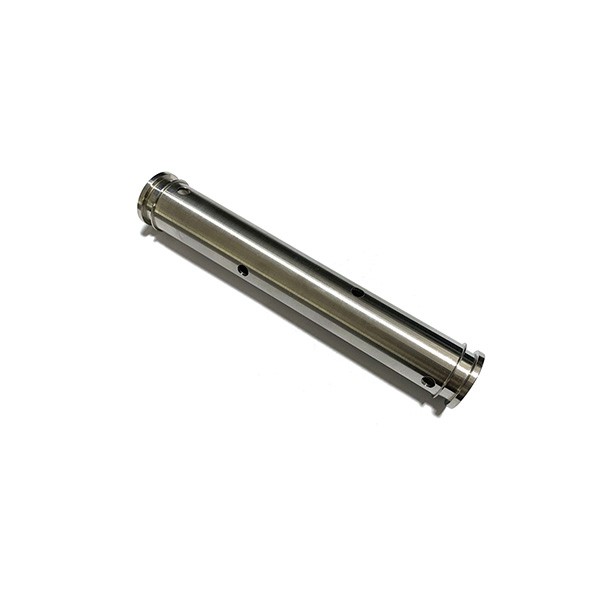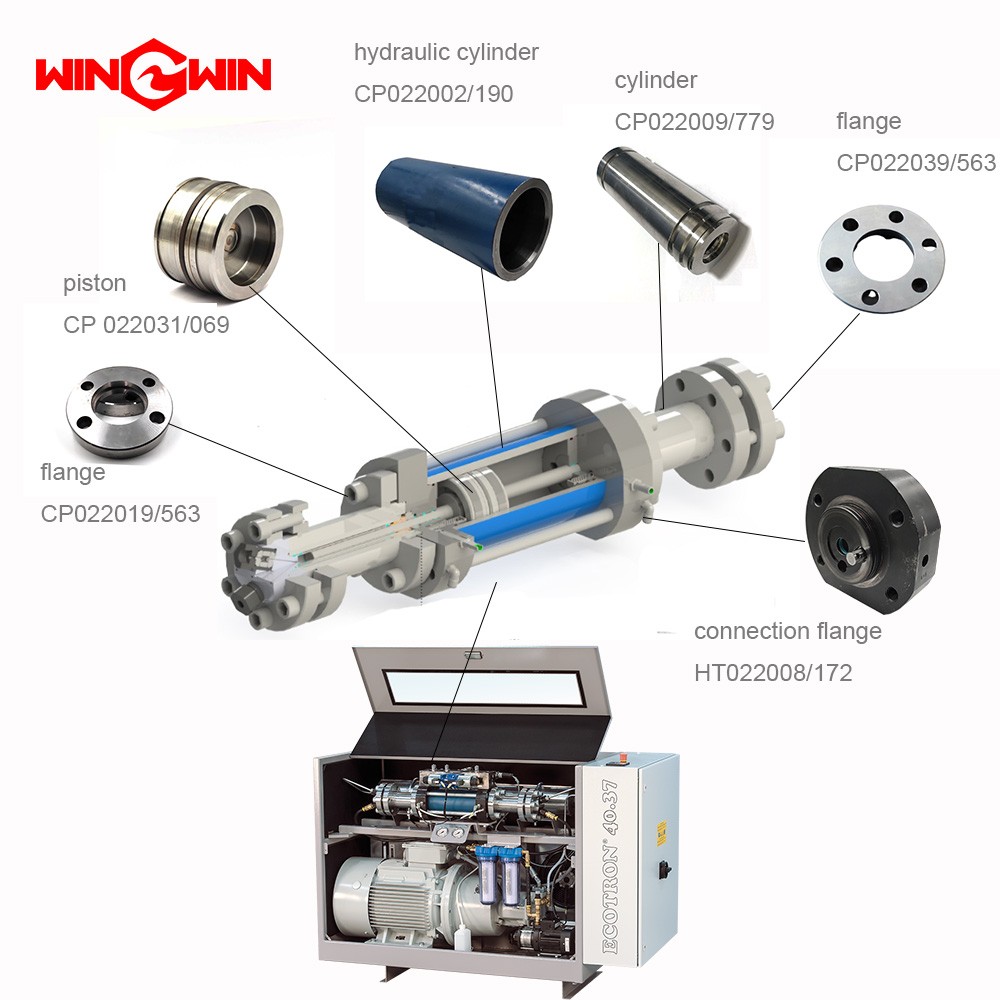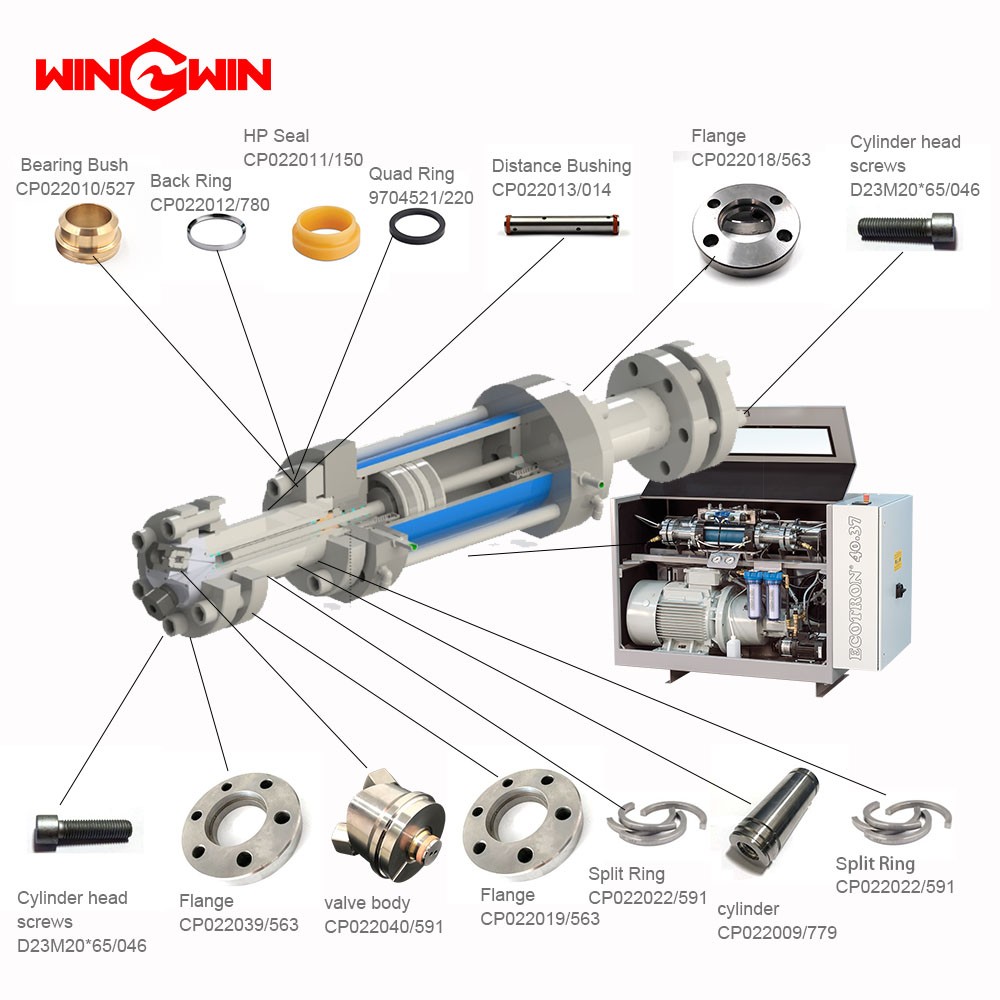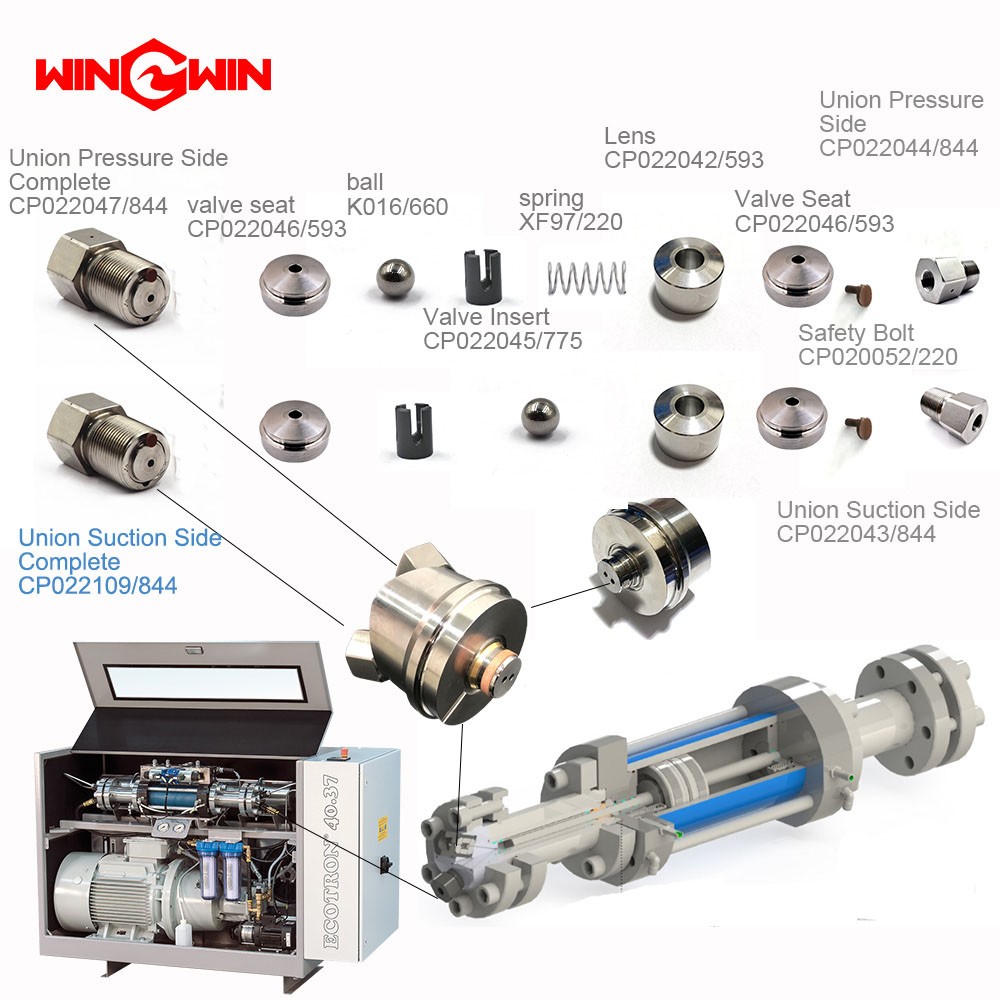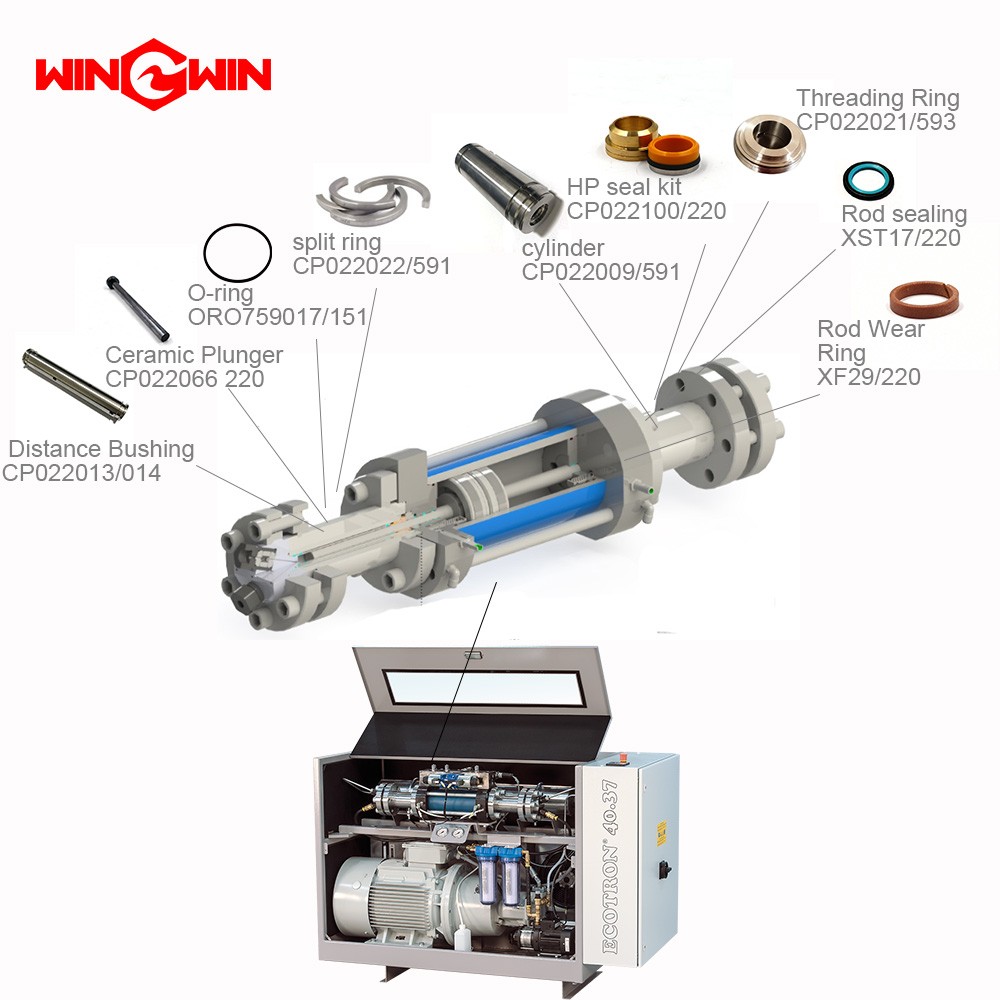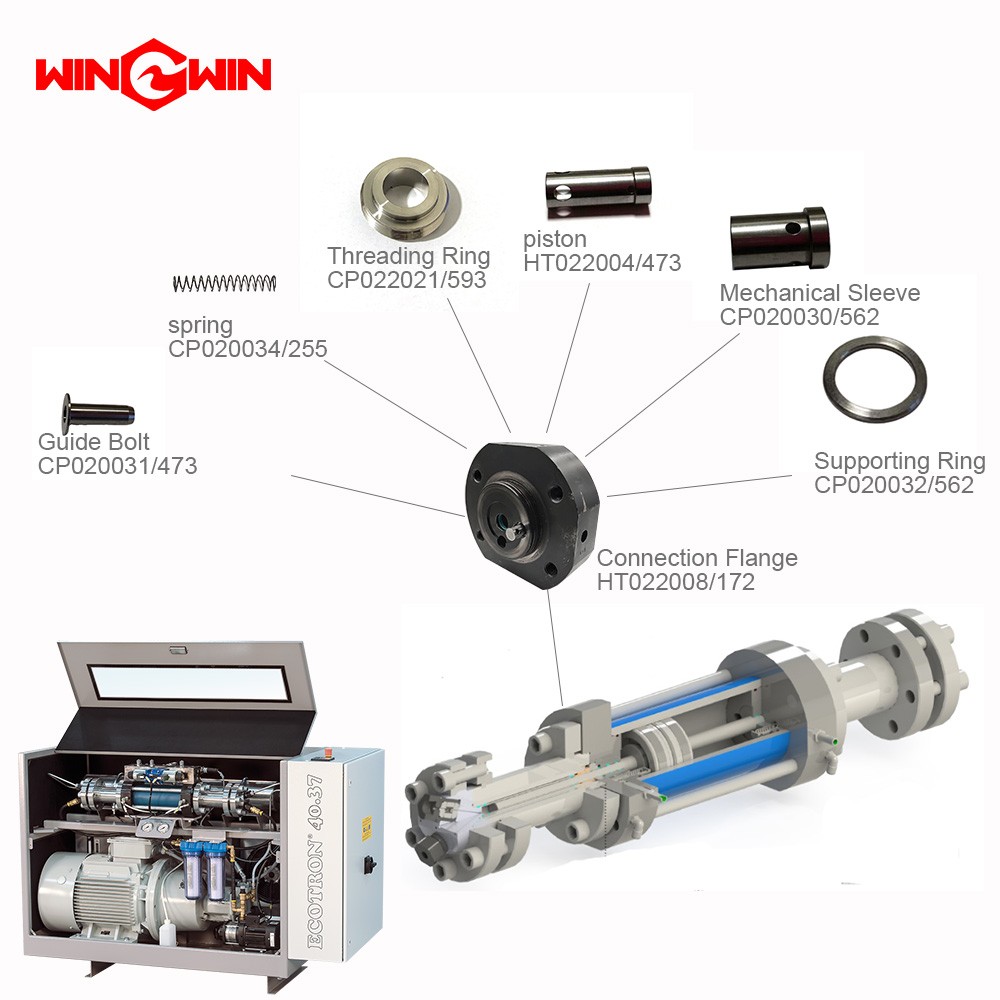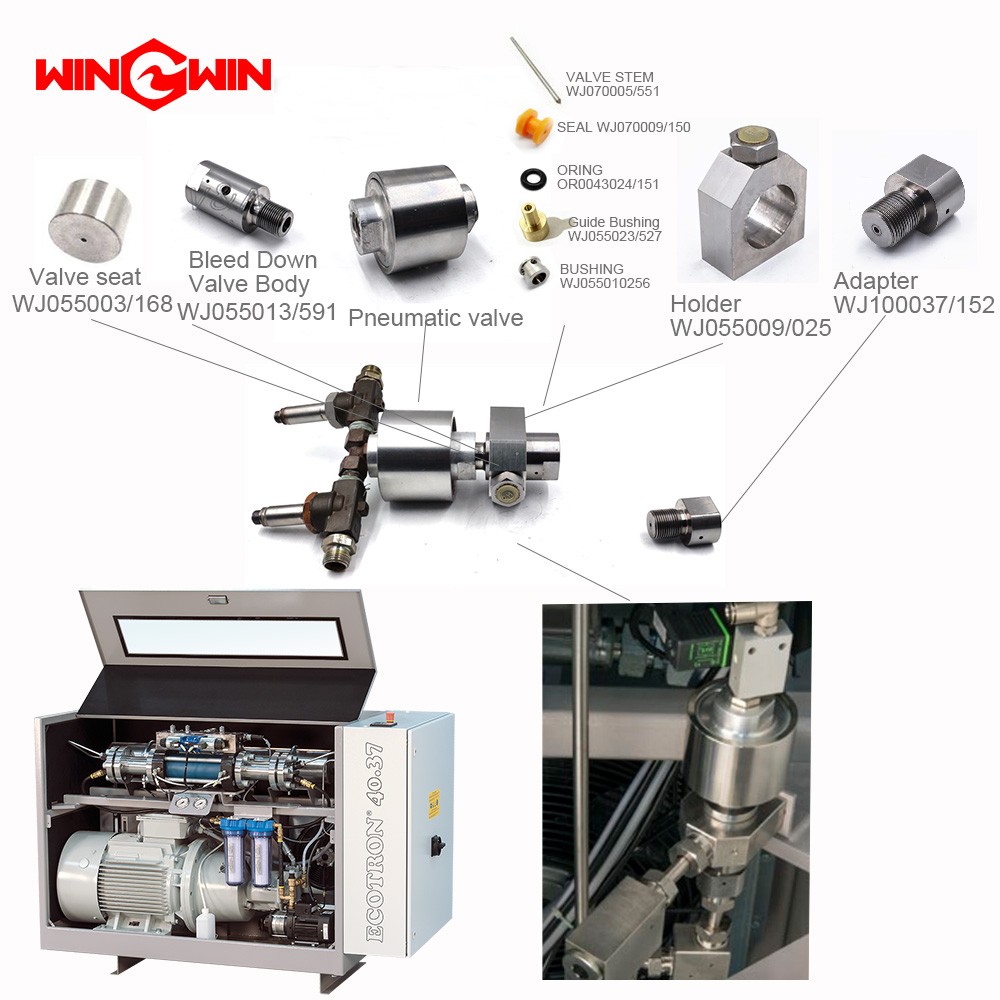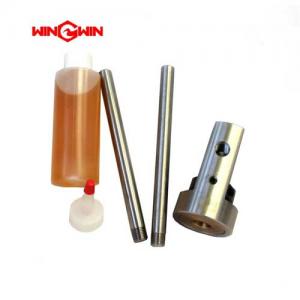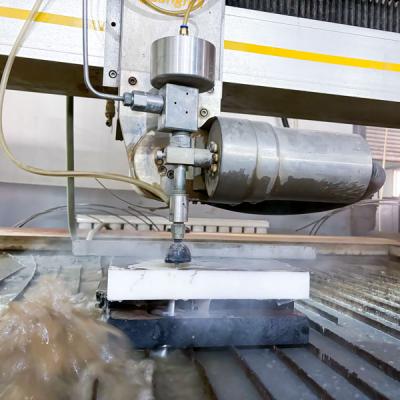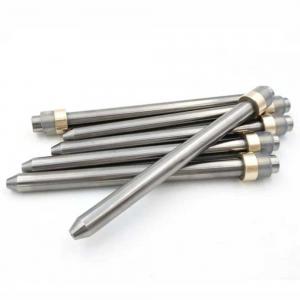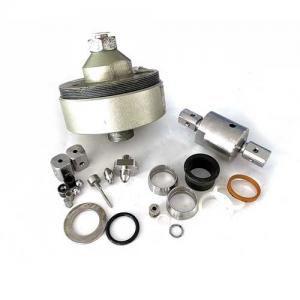Win Win waterjet provide many kinds of waterjet parts, OEM/ODM available
CP022013/540 bushing for BFT waterjet
The intensifier pump is a critical component of a waterjet cutting system, and it can experience a range of problems that can affect the performance and reliability of the system. Here are some common problems of intensifier pumps:
Low pressure: One of the most common problems with intensifier pumps is low pressure. This can be caused by a variety of issues, including a clogged or worn nozzle, a damaged check valve, or an issue with the intensifier cylinder.
High pressure leaks: High-pressure leaks can occur in the intensifier pump, which can result in reduced cutting performance and even damage to the pump. This can be caused by a variety of factors, including worn seals, damaged tubing, or a loose fitting.
Intensifier cylinder failure: The intensifier cylinder is a critical component of the pump, and it can experience failure due to a variety of factors, including excessive wear, corrosion, or contamination. This can result in reduced pressure and performance, as well as damage to the pump.
Motor failure: The motor that drives the intensifier pump can experience failure due to a variety of factors, including overuse, overheating, or electrical issues. This can result in reduced performance or even complete pump failure.
Water quality issues: Water quality is critical for the proper operation of a waterjet cutting system. Poor water quality can cause problems with the intensifier pump, including corrosion, clogged filters, and damage to seals and valves.
Maintenance issues: Like any mechanical system, the intensifier pump requires regular maintenance to ensure proper operation and prevent problems. Failure to perform regular maintenance, such as changing filters, checking seals, and inspecting hoses, can lead to problems with the pump.
Operator error: Operator error can also contribute to problems with the intensifier pump. This can include running the pump at incorrect pressures, improper shutdown procedures, or failure to follow proper maintenance procedures.
To prevent problems with the intensifier pump, it is important to perform regular maintenance, use high-quality components, and follow proper operating procedures. Additionally, it is important to work with an experienced and knowledgeable technician who can diagnose and repair any issues that may arise with the intensifier pump.
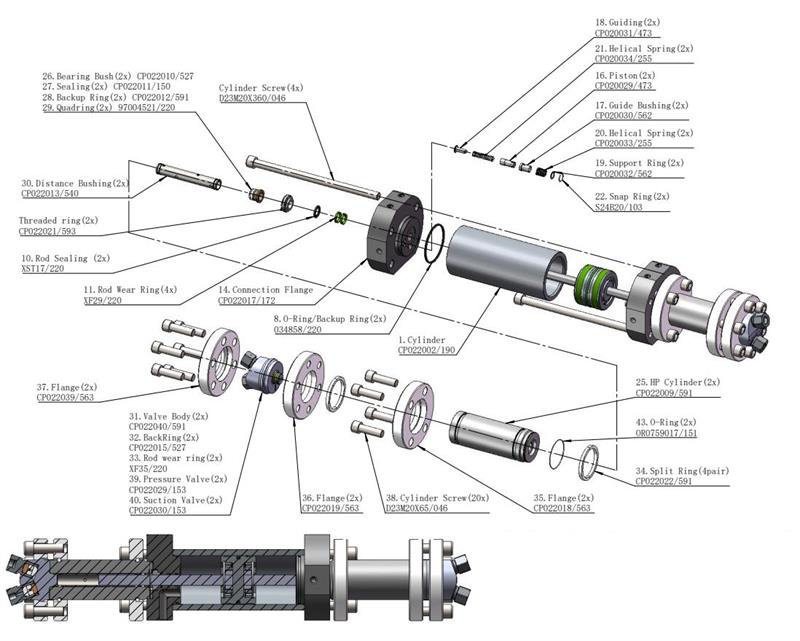
| CP022002/190 | Cylinder |
| 1200402 | piston complete |
| XK121/220 | Piston sealing |
| XF56/220 | Wear ring |
| CP022066/220 | Plunger complete |
| CP022057/075 | Clamp ring |
| HT022044/103 | Retaining ring |
| 034858/220 | O-ring backring 97 |
| XST17/220 | Rod sealing 22,0 x 32,7 x 4,2 mm |
| XST17/220 | Rod sealing 22,0 x 32,7 x 4,2 mm |
| XF29/220 | Rod wear ring 22x27x5,6 mm |
| D23M20360/046 | Cylinder head screw |
| CP022017/172 | connection flange |
| CP022016/172 | connection flange |
| CP022021/593 | Thread ring |
| HT022004/473 | Piston |
| CP020030/562 | Bushing |
| CP020031/473 | Guiding |
| CP020032/562 | Supporting ring |
| CP020033/255 | helical spring |
| CP020034/255 | helical spring |
| CP020034/255 | Helical spring |
| S24B20/103 | Snap ring |
| xn5/220 | initiator |
| XST9/220 | PLUG |
| CP022009/779 | High pressure cylinder |
| CP022010/527 | Bearing bush |
| CP022011/150 | Sealing |
| CP022012/780 | Back ring |
| 9704521/220 | Quadring |
| CP022013/014 | Distance bushing |
| CP022040/591 | Valve body |
| CP022015/527 | Back ring |
| XF35/220 | Rod wear ring |
| CP022022/591 | SPLIT RING |
| CP022018/563 | Flange |
| CP022019/563 | Flange |
| CP022039/563 | Flange |
| D23M20*65/046 | Cylinder head screw |
| CP022047/844 | Pressure valve |
| CP022019/844 | suction valve |
| MA160818/220 | swivel male elbow |
| OR0759017/151 | o-ring75.92*1.78 |
 wwaterjet
wwaterjet 